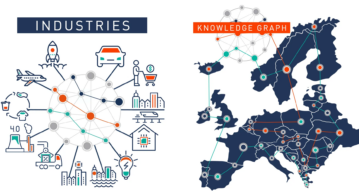Managing the API in the age of connectivity – with Sentinet from Nevatech
In our last article we looked at the pivotal role that APIs play in modern organizations. Whether it’s mediating between internal applications and services, providing endpoints via which developers access the services they need or presenting information to outside parties (like suppliers of intermediaries), the API is now indistinguishable from any other software or data asset.
That situation requires specific and careful consideration, and although it’s probably called for, most enterprises just don’t have the resources to commit, full-time, to managing, overseeing the governance of, and monitoring APIs right across all areas where they play such a critical role.
That lack of ability or finances to undertake the work isn’t uncommon. Even in the largest of household-name enterprises, the additional complexity layer of in-house, cloud and hybrid IT stacks makes it very much a specialized task. One that, fortunately enough, can be passed wholesale to perhaps the only vendor on the market that offers the type of legal and practical governance of APIs that’s necessary for today’s interconnected economy. Sentinet from Nevatech is unique in that it’s based on the Microsoft platform and can cover off hybrid topologies, cloud, and on-premise environments — in one package.
Deployed on-premise, in the private data center, or in the cloud, Sentinet is capable of extending its oversight and control right over even the most distributed network. That’s good to know, as is the fact that when the business demands a sudden shift in deployment models (for instance, a peak in demand needing a “burst out” to public cloud services for a spell), Nevatech’s Sentinet is right there.
When it’s running locally, it acts as an intermediary (in conceptual terms), allowing highly controllable access to outside sources like customers or partner organizations. It not only monitors and attenuates individual traffic (parsing, translating, and even duplicating calls to multiple endpoints, for example), but it also acts as a monitoring point to see exactly where APIs might be under duress or misfiring in some way. Because of that ability alone, organizations can optimize the entire customer experience — the end-user’s interactions with all systems go unhindered by APIs that are overburdened or have hit difficulties in backlog processing.
Similarly, in internal systems that are highly discrete and might even be massively containerized, managing calls and data flows from internal applications to services is overseen and managed in the same dashboard environment. That makes Sentinet perfect for helping teams transition development systems to production, with easy-to-access metrics and performance figures at each stage of an application’s evolution, from DevOps, through testing & QA to full production.
Teams can draw from the platform’s API Repository (thus ensuring there’s no duplication of development efforts), so solutions’ APIs are quick to spin up as ready-mades from library templates, and there’s full API discovery and publication of carefully-managed metadata and documentation too. Custom behaviors can be implemented easily, and being a fully Microsoft-based platform, there are specific advantages for users of Azure and BizTalk Server ESB architectures (like Service Bus relaying on Azure and AD integration, as an isolated example).
The API Management Portal that ships with Sentinet gives users the type of oversight and remote, secure control that’s necessary to remove from teams the burden of managing APIs in any part of the enterprise’s networks. As well as tracking telemetry and gathering/presentation of key metrics, there’s also the ability to graphically configure virtual services, APIs, and even security policies at a highly granular level.
Clearly, there are too many features and capabilities to get into here, but suffice it to say that of the current crop of API Management frameworks available today, Nevatech’s Sentinet stands head and shoulders above its competitors, regardless of native platform. Furthermore, for businesses with investment already in Microsoft and Azure environments, there are some very quick wins.
This is the age of the API, where connectivity is king. To promote this vision and to make sure of smooth data interchange, highest-level uptimes and customer experiences that are smooth and never bottlenecked, we recommend Nevatech. To learn more, there’s a useful overview PDF, but we recommend seeing for yourself. Why not register for a free trial?









